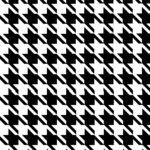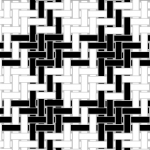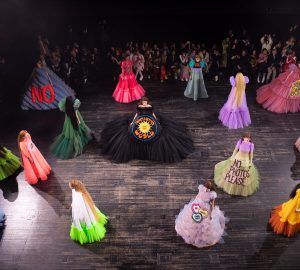Written by Artesia Rose, contributor
Modern yet universal, houndstooth is a staple print that never loses its luster. In recent years, there has been a revival of the two-toned textile as seen on models strutting down the runway donning new designer styles.
Houndstooth, also known as “shepherd’s check” is a classic pattern that coined its name after it’s resemblance to the shape of a dog’s tooth. It consists of irregular pointed squares commonly seen in black and white duotone and is also a prime example of a tessellation.
Worn as an outer garment by shepherds, houndstooth originated in wool cloth from the Scottish lowlands dating back to the 19th century. Even though the pattern emerged over a century ago, the popularity of the print did not step into the fashion world until the 1930s.
Houndstooth was initially adopted by the upper class as a status symbol for wealth upon arriving to the style scene. Christian Dior was one of the first designers to incorporate houndstooth in his designs for the 1948 Haute Couture spring/summer collection. In 1959, French shoe designer Roger Vivier created pointed court heels for Dior with a smaller scale version of the pattern. Six years later, he enlarged it for a turquoise and black A-line coat.
Even though houndstooth is commonly seen in black-and-white, many modern variations have hit the catwalk. Designers from across the globe have re-envisioned the traditional mosaic by toying with its color and scale. The remixed print captivates the eye while paying tribute to the past. Houndstooth is a classic print for old and new fashionistas that never goes out of style.
























